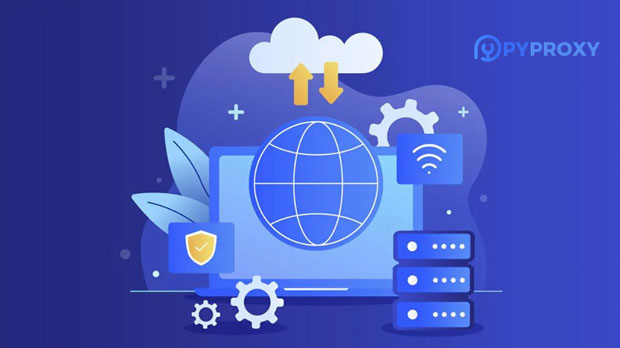When considering the selection between HTTP, HTTPS, or SOCKS5 for network access, it is essential to understand the distinct characteristics of each protocol. HTTP (HyperText Transfer Protocol) is the foundation of data communication on the World Wide Web, while HTTPS (HyperText Transfer Protocol Secure) adds a layer of security by encrypting the connection. On the other hand, SOCKS5 is a proxy protocol that allows for more versatile data routing, offering both privacy and support for a wide range of traffic types. Choosing the right protocol depends on the nature of the user's access needs, such as security, privacy, speed, and the type of traffic involved. In this article, we will analyze each protocol's strengths and weaknesses, helping you decide which one suits your requirements the best. Understanding HTTP, HTTPS, and SOCKS5To make an informed decision about which protocol to choose, it is important to first understand their basic functionalities and purposes. 1. HTTP (HyperText Transfer Protocol): This is the standard protocol for transferring hypertext (HTML) between servers and clients. HTTP operates on port 80 and does not encrypt data, which means that information transferred using HTTP can be intercepted by malicious actors. It is typically used for non-sensitive browsing and is the least secure option for most use cases. 2. HTTPS (HyperText Transfer Protocol Secure): This protocol is essentially HTTP with an added layer of security through SSL/TLS encryption. HTTPS operates on port 443 and ensures that the data exchanged between the server and client is encrypted, making it resistant to man-in-the-middle attacks and eavesdropping. It is widely used for sensitive activities such as online banking, shopping, and login credentials transmission.3. SOCKS5 (Socket Secure version 5): SOCKS5 is a proxy protocol designed to route traffic between clients and servers. Unlike HTTP and HTTPS, which are primarily designed for web traffic, SOCKS5 can handle a wider variety of data types, including email, file transfers, and even P2P (peer-to-peer) traffic. SOCKS5 does not provide built-in encryption but can be configured with additional encryption methods if required. This makes it a versatile choice for users looking for greater anonymity or the ability to bypass geographic restrictions.Factors to Consider When Choosing a ProtocolWhen selecting the best protocol for your needs, it’s important to consider several factors. Below are the primary criteria that should guide your decision-making process:1. Security RequirementsSecurity is often the most important factor when choosing a network protocol. - HTTPS: If data security is a primary concern, especially when transmitting sensitive information like login credentials or payment details, HTTPS should be the go-to choice. HTTPS provides end-to-end encryption, which protects against potential eavesdropping and data breaches.- HTTP: While HTTP is fast and efficient for non-sensitive browsing, it lacks encryption. This makes it unsuitable for any activity that requires secure data transmission.- SOCKS5: Although SOCKS5 does not inherently encrypt traffic, it can be paired with other encryption tools like VPNs to offer an additional layer of privacy. This makes it ideal for users who need anonymity or wish to mask their IP address.2. Privacy and AnonymityFor those who prioritize privacy or wish to remain anonymous online, SOCKS5 is often the best choice.- SOCKS5: This protocol allows users to route traffic through a proxy server, effectively masking their IP address and adding a layer of anonymity. It also supports a variety of data types, including non-HTTP traffic, making it a flexible choice for users who want to maintain privacy.- HTTPS: While HTTPS encrypts the communication channel, it does not inherently provide anonymity. The website server you connect to can still track your IP address and behavior.- HTTP: Like HTTPS, HTTP does not offer any built-in privacy protection. It is transparent and easily traceable by websites, making it the least favorable option for privacy-focused users.3. Speed and PerformanceDifferent protocols offer varying levels of speed and performance, which can affect your browsing or data transfer experience.- HTTP: HTTP generally offers faster speeds because it does not require the overhead of encryption, making it a good choice for basic, low-risk browsing where security is not a major concern.- HTTPS: While HTTPS is slightly slower than HTTP due to the encryption process, modern optimization techniques ensure that this difference is minimal. Given the increasing need for secure connections, the slight drop in speed is usually an acceptable trade-off.- SOCKS5: SOCKS5 performance can vary depending on the proxy server’s speed and the traffic being routed. While SOCKS5 can handle a variety of traffic types, it might not offer the same speed as direct connections, especially if additional encryption layers are applied.4. Use Case and Traffic TypeYour specific use case and the type of data you wish to transfer can heavily influence your protocol choice.- HTTP: This protocol is best suited for standard web browsing and non-sensitive content where security is not a concern.- HTTPS: For secure transactions, online banking, shopping, or any activity involving confidential information, HTTPS is a must.- SOCKS5: If your needs extend beyond simple web browsing and involve diverse traffic like P2P file sharing, VoIP, or gaming, SOCKS5’s ability to handle a variety of protocols and its flexibility in routing traffic makes it the optimal choice.5. Compatibility and Network ConstraintsIn some situations, the choice of protocol may also depend on compatibility and the network environment.- HTTP and HTTPS: These protocols are universally supported by most web servers, browsers, and clients, making them the go-to for almost all web-related activities.- SOCKS5: While SOCKS5 is highly versatile, it may require additional configuration or software (like a proxy client) to work properly. It is also typically used in situations where you need to bypass network restrictions, access blocked content, or achieve greater privacy.Conclusion: Making the Right ChoiceChoosing between HTTP, HTTPS, and SOCKS5 ultimately depends on your access requirements and priorities. For standard web browsing with no concerns about security, HTTP may suffice. However, for secure transactions or any situation where data protection is essential, HTTPS should be your preferred protocol. If privacy, anonymity, or the ability to route diverse types of traffic is your main focus, SOCKS5 offers the most flexibility.Carefully evaluate your specific needs, whether that’s speed, security, privacy, or traffic type, to select the most appropriate protocol. By understanding the strengths and limitations of each, you can make an informed decision that aligns with your usage scenario.
Jul 09, 2025


































































